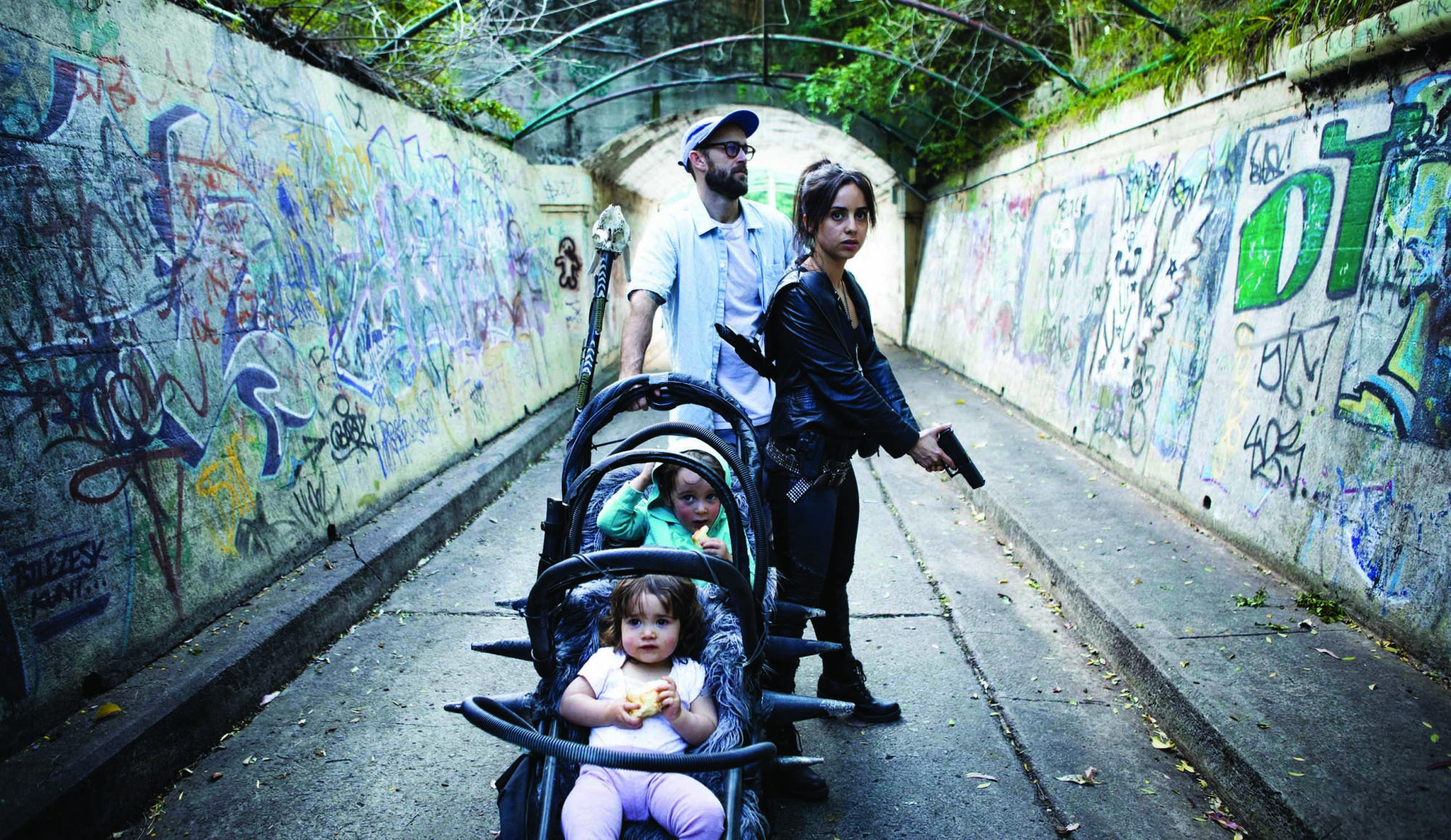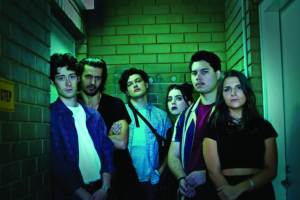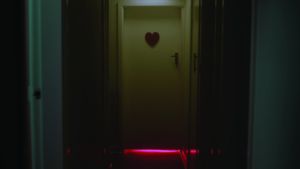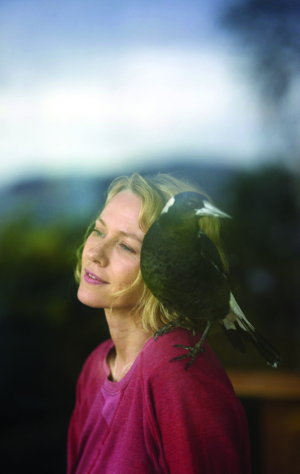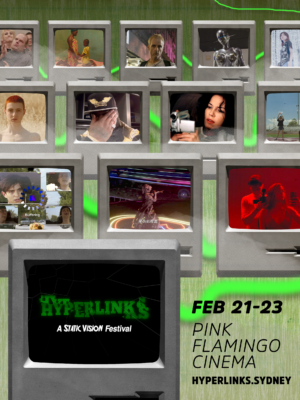As ‘traffic cops at the intersection of Art and Commerce’, producers play a crucial role ‘in shaping the creative and commercial dimensions’ of Australia’s screen industries; so say media scholars Allan Cameron, Deb Verhoeven and David Court.[1]Allan Cameron, Deb Verhoeven & David Court, ‘Above the Bottom Line: Understanding Australian Screen Content Producers’, Media International Australia, vol. 136, no. 1, 2010, p. 90. Traditional producers, however, have been impacted by ramifying digital disruption – what academics Michael Curtin and Kevin Sanson have called a ‘torrent of technological innovation’ driving the rise of new media via satellite, cable, internet and mobile devices.[2]Michael Curtin & Kevin Sanson, ‘Precarious Creativity: Global Media, Local Labor’, in Curtin & Sanson (eds), Precarious Creativity: Global Media, Local Labor, University of California Press, Oakland, 2016, p. 6. Viewerships are fragmenting, with increasingly active audiences, especially from younger age groups, moving away from traditional broadcast programming and towards public and commercial broadcasters’ catch-up services, including ABC iview and SBS on Demand; subscription video-on-demand (SVOD) outlets, such as Stan and Netflix; and Google’s YouTube.[3]Screen Australia, Online & On Demand 2017: Trends in Australian Online Viewing Habits, 2017, p. 13, available at <https://www.screenaustralia.gov.au/getmedia/f06697b8-07be-4a27-aa8b-bc3ad365238c/online-on-demand-2017>, accessed 18 August 2019. Two centres of gravity have thus formed for screen content in Australia: longform storytelling’s popularity remains, but it is now prevalent on catch-up and SVOD services as well as traditional TV, while shortform works – whose average length is just four minutes[4]Xu Cheng, Jiangchuan Liu & Cameron Dale, ‘Understanding the Characteristics of Internet Short Video Sharing: A YouTube-based Measurement Study’, IEEE Transactions on Multimedia, vol. 15, no. 5, 2013, p. 1188. – tend to predominate on advertiser-supported video-on-demand (VOD). It is therefore timely to better understand how Australian creators are faring on these new platforms: is the work they do sustainable, are their careers progressing and are their artistic talents developing?
With advertisers chasing online eyeballs, a cultural divide has opened up. On one side are traditional TV creators, who have spent years developing their craft. On the other are what theorists Stuart Cunningham and Adam Swift have defined as a proto-industry of younger ‘born-online’ creators who are disrupting mainstream markets by professionalising and monetising the entertainment they make for the web[5]Stuart Cunningham & Adam Swift, ‘Over the Horizon: YouTube Culture Meets Australian Screen Culture’, in Felicity Collins, Jane Landman & Susan Bye (eds), A Companion to Australian Cinema, John Wiley & Sons, Hoboken, NJ, 2019, p. 475. – what researchers Jason Potts and colleagues have described as ‘social network markets’.[6]Jason Potts et al., ‘Social Network Markets: A New Definition of the Creative Industries’, Journal of Cultural Economics, vol. 32, no. 3, 2008, pp. 167–85. YouTube alone accounts for 1 billion hours of human attention daily, globally.[7]Cristos Goodrow, ‘You Know What’s Cool? A Billion Hours’, YouTube blog, 27 February 2017, <https://youtube.googleblog.com/2017/02/you-know-whats-cool-billion-hours.html>, accessed 17 August 2019. Moreover, with 85 per cent of every dollar spent on online advertising going to either Google or Facebook,[8]See John Herrman, ‘Media Websites Battle Faltering Ad Revenue and Traffic’, The New York Times, 17 April 2016, <https://www.nytimes.com/2016/04/18/business/media-websites-battle-falteringad-revenue-and-traffic.html>, accessed 19 August 2019. dominant technology companies have been critiqued for their ‘massive impact on artistic revenue’[9]Australian Communications and Media Authority, Australian Content Conversation Conference Overview, 16–17 May 2017, 2017, p. 10. due to copyright laws (although rights holders can opt to take down infringing content or receive monetary compensation for it under YouTube’s Content ID scheme[10]See ‘How Content ID Works’, YouTube Help, <https://support.google.com/youtube/answer/2797370?hl=en&ref_topic=9282364>, accessed 17 August 2019.). The realities facing creators seeking to distinguish themselves in the contemporary landscape were put on display when speakers at the Australian Communications and Media Authority’s ‘Australian Content Conversation’ conference pointed to a YouTube tutorial made by a young woman instructing viewers how to do a high ponytail, which had been viewed over 2 million times. The value of content to Australian audiences, according to these speakers, should be based on much more than ‘clicks’ and ‘likes’; however, as researcher Richard Lanham has observed of the internet’s ‘attention economy’, ‘competition is fierce’ when ‘the only economic reality […] is eyeballs’.[11]Richard Lanham, ‘The Two Markets: Libraries in an Attention Economy’, Library Resources and Technical Services, vol. 52, no. 2, April 2008, p. 9.
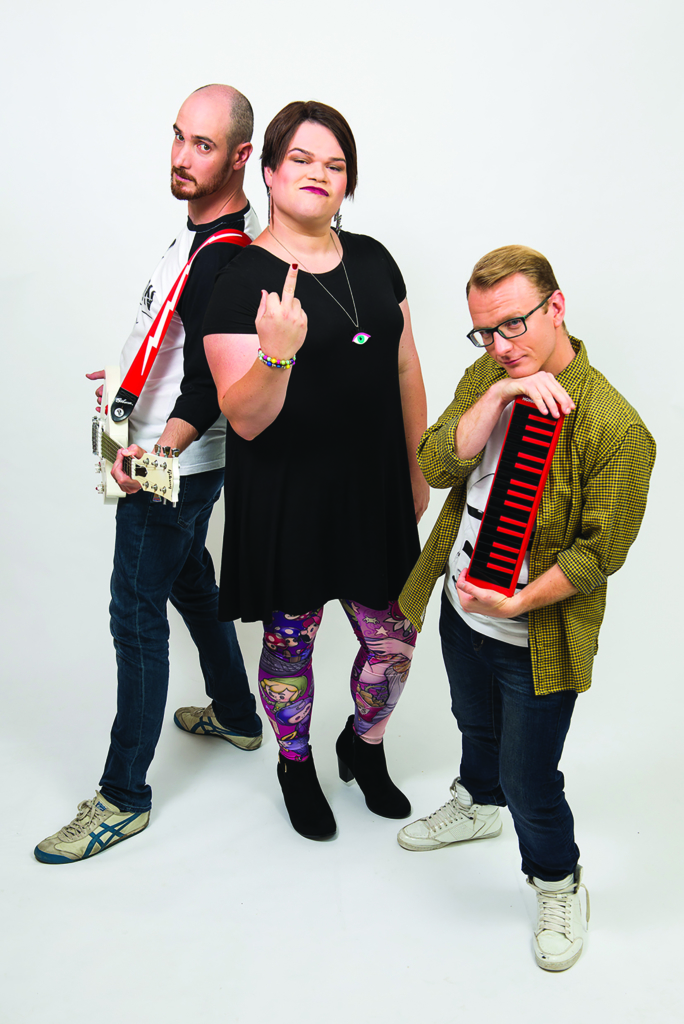
A 2017 House of Representatives inquiry into Australian film and television identified the competitive, ‘cutthroat’ nature of the industry – particularly screen content producers’ irregular hours and unpredictable incomes – as a significant problem.[12]Commonwealth of Australia, Report on the Inquiry into the Australian Film and Television Industry, 7 December 2017, p. 80, available at <https://www.aph.gov.au/Parliamentary_Business/Committees/House/Communications/AustralianfilmandTV/Report>, accessed 17 August 2019. The committee’s evidence supported the findings of Cameron, Verhoeven and Court’s major survey of screen content producers that had identified unsustainability as a core issue as far back as 2009; their study deemed this type of work ‘fraught and precarious’, and one in which success proceeded on ‘a project-by-project basis with little in the way of cumulative gain, financial security or genuine business development’.[13]Cameron, Verhoeven & Court, op. cit., p. 98. The Dressmaker (Jocelyn Moorhouse, 2015) producer Sue Maslin, for example, spent five years refining the hit movie’s script, ‘earning just [A]$14,000 in producer fees […] during that time’.[14]Don Groves, ‘Sue Maslin and SPA Call for Better Development Deals for Producers’, IF.com.au, 28 November 2017, <https://www.if.com.au/sue-maslin-spa-call-better-development-deals-producers>, accessed 17 August 2019.
By 2012, researchers Cunningham, Verhoeven and Mark David Ryan found that the precariousness of work within the industry had worsened. The transition from TV to digital as a competitive source of work was well underway, but the ‘Wave 2’ creators they interviewed were even more reliant on ‘psychic’ income than those involved in Cameron, Verhoeven and Court’s 2009 study, as fewer were able to secure full-time work. Interviewees reported feeling threatened by younger talent, large production companies and funding scarcity, with an increasing number even suggesting that an IT qualification seemed essential to their work.[15]Mark David Ryan, Stuart Cunningham & Deb Verhoeven, 2nd Australian Producer Survey 2012: Understanding Australian Screen Content Producers: Wave 2, ARC Centre of Excellence for Creative Industries and Innovation, Brisbane, November 2012.
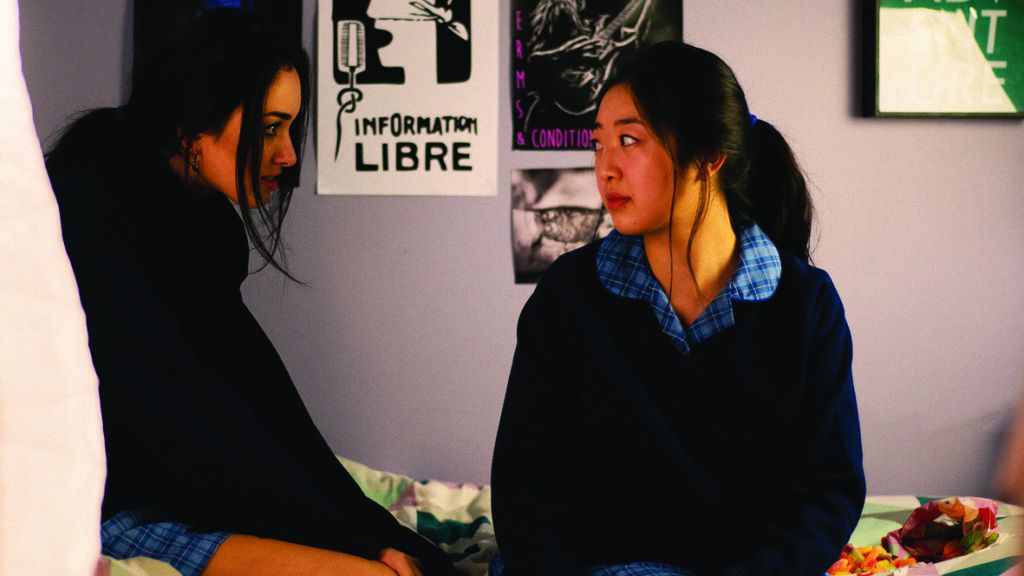
Without a doubt, screen content producers are facing pressures to navigate increasingly globalised production chains.[16]Tom O’Regan & Anna Potter, ‘Globalisation from Within? The De-nationalising of Australian Film and Television Production’, Media International Australia, vol. 149, no. 1, 2013, p. 8. However, seizing on the possibilities of such change, a number of switched-on creatives working in traditional film and TV have embraced the young disrupters through Skip Ahead, Screen Australia’s edgy initiative run in partnership with Google, as well as its wider Multiplatform Drama fund. The nineteen Skip Ahead alumni to date[17]For information on the Skip Ahead cohort for 2019, who are in the midst of producing their web series, see ‘Screen Australia and Google Australia Announce Recipients of Skip Ahead 5’, media release, Screen Australia, 25 February 2019, <https://www.screenaustralia.gov.au/sa/media-centre/news/2019/02-25-skip-ahead-5-recipients-announced>, accessed 16 August 2019. have created, among them, web series of eight five- to seven-minute episodes, beta TV pilots of twenty-four minutes and even forty-plus-minute ‘web films’, cumulatively having attracted 42 million views worldwide as of 2018.[18]‘Screen Australia and Google Australia Announce Skip Ahead Five’, media release, Screen Australia, 8 October 2018, <https://www.screenaustralia.gov.au/sa/media-centre/news/2018/10-08-screen-australia-google-announce-skip-ahead>, accessed 17 August 2019.
Skip Ahead has generated three significant benefits for screen content producers: opportunities for monetisation; opening up pathways to sustainability; and encouraging the adaptation of storytelling for the aforementioned ‘social network markets’ … with a renewed emphasis on the serial format.
Crucially, Screen Australia recommends that YouTube creators participating in Skip Ahead establish ‘[g]enuine collaborations’ with veteran producers.[19]‘Skip Ahead’, Screen Australia website, <https://www.screenaustralia.gov.au/funding-and-support/television-and-online/production/special-initiatives/skip-ahead>, accessed 17 August 2019.
To gain insights into this process, I speak to the following producers who have been involved in Skip Ahead:
• Bryan Moses, who teamed up with The Axis of Awesome (as part of the 2014 intake)
• Ric Forster, with Louna Maroun (2014)
• Paul Walton, with Superwog (2016)
• Julie Byrne, with RackaRacka (2016)
• Laura Clelland and Sandra Makaresz, with Study with Jess (2017).
Others who have lent their time to my study include:
• script producer Mike Jones, who has run film-development workshops for Skip Ahead
• former Screen Australia online investment manager Mike Cowap
• ABC head of comedy Rick Kalowski
• director Connor Van Vuuren, who worked on Skip Ahead–participating web series Over and Out
• writer/director/producer Julie Kalceff, producer Taylor Litton-Strain and director Erin Good, each of whom recently succeeded in obtaining Screen Australia Multiplatform funding
• director/cinematographer David Batty, who has received Screen Australia funding in the Documentaries – Producer Program
• International Academy of Web Television (IAWTV) chair Tina Cesa Ward.
My analysis shows that thirteen of the nineteen Skip Ahead teams opted to collaborate with an established producer, suggesting that these creators are aspiring to carve out a career in the ‘new mainstream’ of longform VOD. Based on a synthesis of the interviews I conducted, key policy documents and trade press, I argue that Skip Ahead has generated three significant benefits for screen content producers: opportunities for monetisation; opening up pathways to sustainability; and encouraging the adaptation of storytelling for the aforementioned ‘social network markets’, including the adoption of best-practice approaches for hybrid online–TV production, with a renewed emphasis on the serial format.[20]For more on these evolutions in storytelling in response to new media, see Anthony N Smith, Storytelling Industries: Narrative Production in the 21st Century, Palgrave Macmillan, New York, 2018.
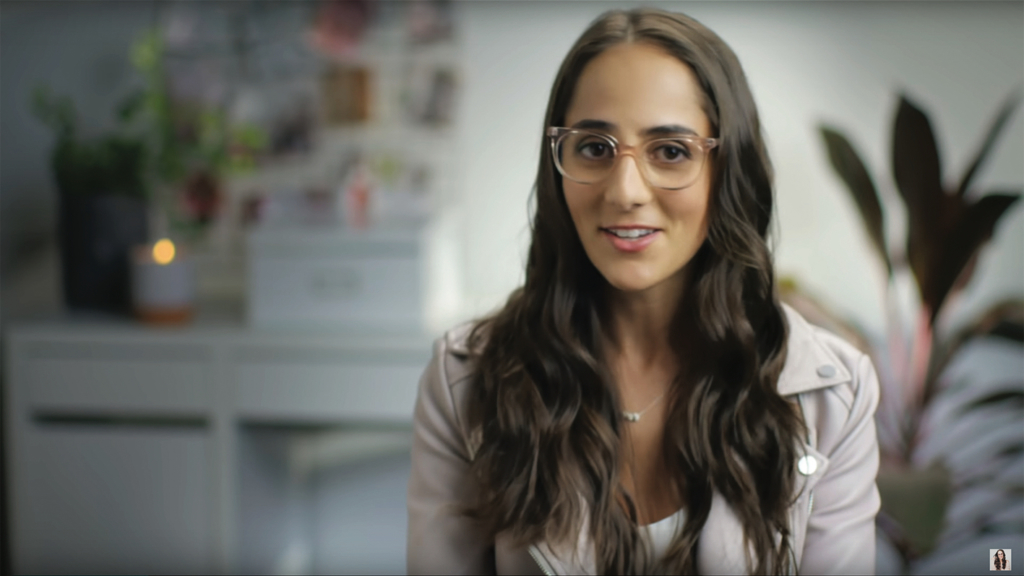
Path to monetisation
The web series is a polarising format, embodying a kind of ‘ground zero’ for an industrial rift between craft labour and Hollywood. On one hand, Writers Guild of America scribes embraced online video during their 2007–2008 strike against production companies, which sought to avoid paying residuals for internet-delivered content.[21]See Aymar Jean Christian, Open TV: Innovation Beyond Hollywood and the Rise of Web Television, New York University Press, New York, 2018, p. 56. Conversely, as John T Caldwell has contended, examples such as ‘beta-tested web series’ have been seen as responsible for driving the rise of ‘spec work’, which ‘undermines labor value by giving away much intellectual property for little in return’.[22]John T Caldwell, cited in Curtin & Sanson, op. cit., p. 11. For a quarter of a century, creators have been struggling with how best to distribute web series – initially on personal websites, then later on their YouTube channels. The factors militating against the success of the format have been so formidable that breakout hits have proven rare – so much so that they can be listed easily:
• Scott Zakarin’s The Spot (1995–1997)
• Miles Beckett, Mesh Flinders and Greg Goodfried’s lonelygirl15 (2006–2008)
• Felicia Day’s The Guild (2007–2013)
• Ward’s Anyone but Me (2008–2011)
• Ilana Glazer and Abbi Jacobson’s Broad City (2009–2011)
• Adam Jones and Boaz Stark’s The Horizon (2009–2017)
• Issa Rae’s The Misadventures of Awkward Black Girl (2011–2013)
• Julia Ahumada Grob and Yamin Segal’s East WillyB (2011–2013)
• Hank Green and Bernie Su’s The Lizzie Bennet Diaries (2012–2013)
• Freddie Wong, Will Campos, Brian Firenzi and Matt Arnold’s Video Game High School (2012–2014)
• Victoria Cocks and Marcus McKenzie’s Wastelander Panda (2012–2014)
• Kalceff’s Starting from … Now! (2014–2016)
• Terry Dawson’s A Whole New Irving (2016–2017).
That these creators have gained distinction on a platform as saturated as YouTube – eighty-two years worth of content is now uploaded daily[23]James Loke Hale, ‘More than 500 Hours of Content Are Now Being Uploaded to YouTube Every Minute’, Tubefilter, 7 May 2019, <https://www.tubefilter.com/2019/05/07/number-hours-video-uploaded-to-youtube-per-minute>, accessed 16 August 2019. – makes their achievement only more remarkable. As Hank Green has explained, content other than cheap-to-produce gaming videos, style tutorials and vlogs ‘has been nearly impossible to make work [on YouTube]. Narrative content has existed mostly as aspirational, money-losing, pre-pilot pilots for TV shows.’[24]Hank Green, quoted in Stuart Cunningham & David Craig, Social Media Entertainment: The New Intersection of Hollywood and Silicon Valley, New York University Press, New York, 2019, p. 148.
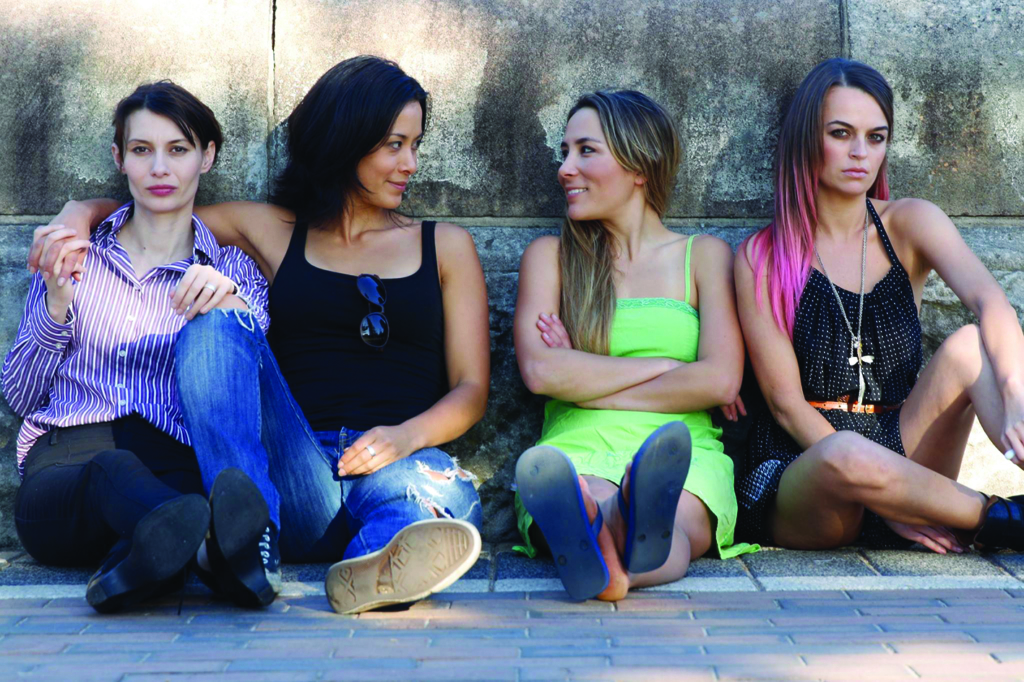
At the 2014 Screen Forever conference, then–Relativity Media acquisitions vice president Matt Brodlie (now with Disney+) identified the problem of how to monetise digital content as the industry’s most pressing problem.[25]See Tara Judah, ‘Place Your Bets: Unknown Odds at the 2014 Screen Forever Conference’, Metro, no. 184, Autumn 2015, p. 123. However, I argue that Skip Ahead – together with other Screen Australia partnership initiatives, such as the ABC collaboration Fresh Blood – has directly contributed to redressing this problem. It has forged a workable path to sustainability in the form of collaborations between producers and creators: build a fan base online; convince Screen Australia of storytelling skills, then obtain a modest grant; create a distinctive web series to attract a strong viewership; and parlay the intellectual property (IP) into sales and licensing on a longform-based VOD platform. The last step is crucial, as Screen Producers Australia has suggested that producers retaining IP while licensing their longform content is the key to production sustainability.[26]Screen Producers Australia, ‘Screen Producers Australia’s Submission to the Australian and Children’s Screen Content Review’, 27 September 2017, available at <https://assets-us-01.kc-usercontent.com/89c218af-4a5a-00a2-9d83-3913048b3bc7/dcb8d75f-f9e1-4828-b966-1e323f037f5e/submission-SPA-Content-Review-Submission-FINAL.pdf>, accessed 16 August 2019. Moreover, I argue that the benefits brought to producers by this approach rival those enjoyed by the YouTube creators themselves – which is critical, given the influential role that producers play in wealth and job creation in the creative industries.[27]Cameron, Verhoeven & Court, op. cit., p. 93.
What is different now is the combination of funded story development, creators’ acquisition of craft skills through collaborations with established producers, a more level playing field when negotiating IP share … and the availability of make-or-break platform analytics.
It’s worth mentioning that Skip Ahead participants retain copyright of their web series, and Screen Australia has verified that it is very rare for third parties to be involved in Skip Ahead IP ownership.[28]Screen Australia, media statement to author, 19 July 2019. While there exist titles that, after having found fame on YouTube, have crossed over to mainstream networks before – for example, Bondi Hipsters (co-created by Van Vuuren) and The Katering Show, both landing on the ABC[29]See Liz Giuffre, ‘Comedy in the New World Order’, Metro, no. 191, Summer 2017, p. 126. – this has happened on an ad hoc basis. What is different now is the combination of funded story development, creators’ acquisition of craft skills through collaborations with established producers, a more level playing field when negotiating IP share against platforms and the availability of make-or-break platform analytics to cut investment risk for the longform platform’s gatekeepers. The Australian industry’s funding programs like Skip Ahead position it in contrast to its US counterpart, wherein web series are mainly self-funded; as Ward reflects, ‘Every year, [Australians] are dominating [the IAWTV’s] awards – for example Jade of Death, High Life, Bruce: The Series. You make and tell interesting stories, because when you don’t have money, you can only tell one story.’[30]Tina Cesa Ward, Skype interview with author, 1 March, 2019.
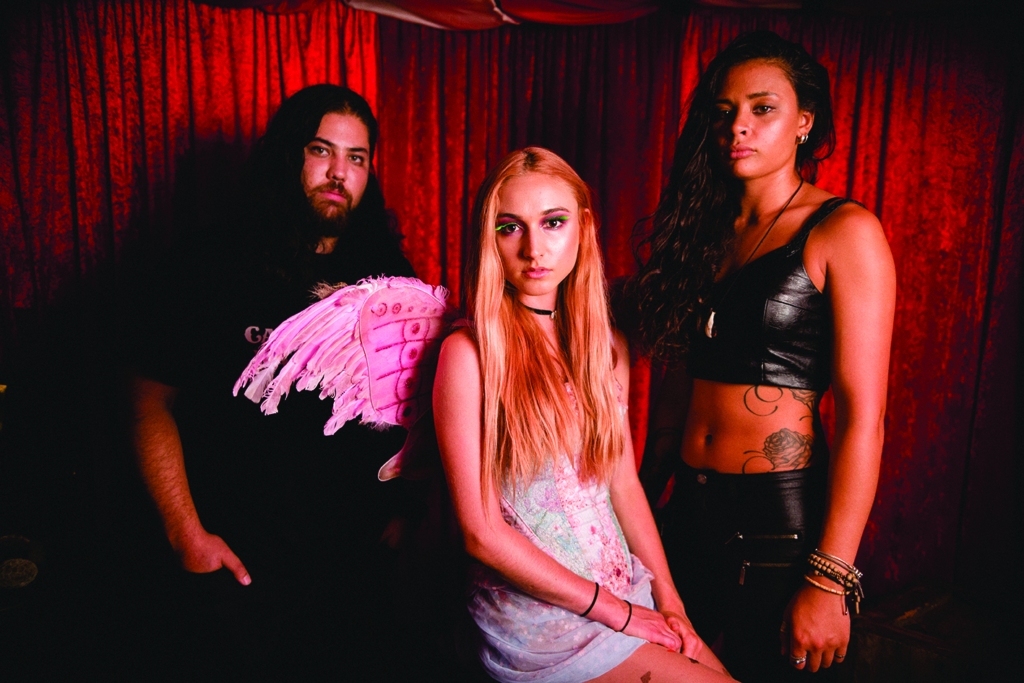
Van Vuuren attributes to Skip Ahead the Canneseries win for his brother Christiaan and Adele Vuko’s web series Over and Out; for the pair, he says, having ‘a great web series’ as proof of concept for a longer-form show was vital:
The fact that Adele and Christiaan’s idea now exists online in a form that we are proud of not only helps us to sell it (seeing as tone is so hard to communicate), [but] also helps us hang onto a bigger slice of the IP, given it is a pre-existing thing.[31]Connor Van Vuuren, personal communication with author, 15 July 2019.
In a similar vein, Kalowski recounts that he commissioned Superwog’s Theo and Nathan Saidden after seeing their twenty-three-minute Skip Ahead project Superwog Series Pilot; he subsequently asked the siblings to make six half-hour episodes as part of a new series. That series – produced by Walton, formerly for Princess Pictures – is the first full-series collaboration between YouTube and the ABC, and ABC Comedy’s first original scripted series.[32]‘Superwog to Forge New Ground with a Series for ABC Comedy and YouTube’, media release, Screen Australia, 22 June 2018, <https://www.screenaustralia.gov.au/sa/media-centre/news/2018/06-20-superwog-new-series-abc-comedy-youtube>, accessed 16 August 2019. YouTube provides creators with detailed demographic and geographic audience-consumption data (known as social analytics), and, according to Kalowski, the analytics of the Superwog pilot were persuasive, evidencing that the pair’s production skills had been honed during this early production process:
Superwog were incredibly funny; it’s hard to be funny for a long time. It was much more polished than their previous shortform videos. They stepped up successfully to tell a really funny story across almost a half-hour – more than just five to ten minutes. The production and creative quality had improved as well. Millions of people were watching, and they were watching right across the video. The story held them.[33]Rick Kalowski, Skype interview with author, 14 August 2018.
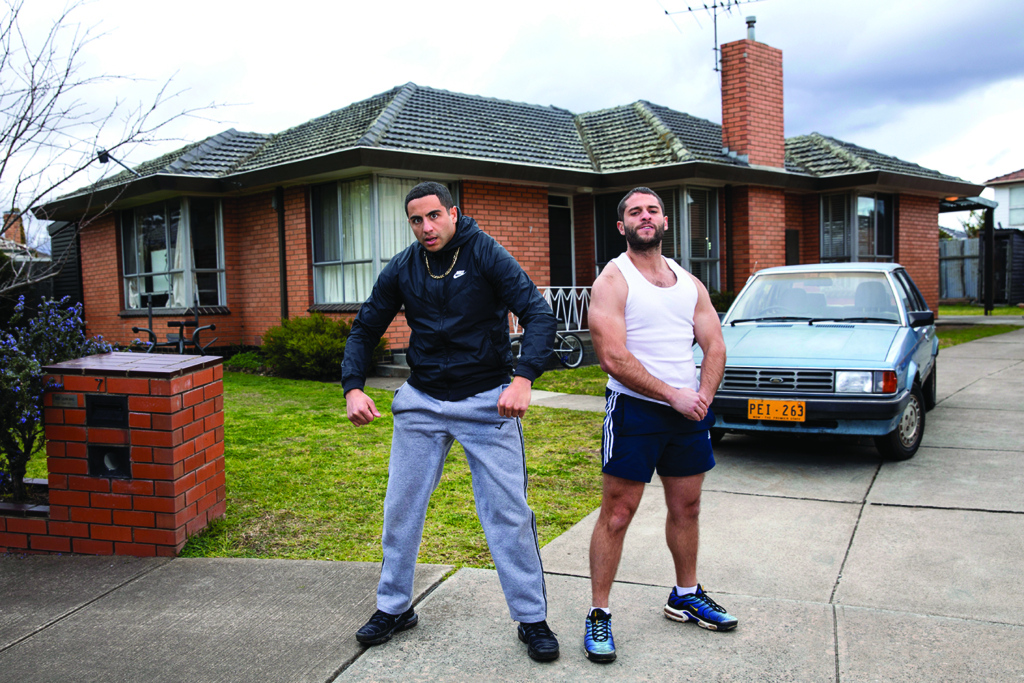
Path to sustainability
Following the release of his queer teen drama Flunk on YouTube, Forster – former senior social and digital producer for Neighbours – secured one of the clearest paths to sustainability: a broadcast sale to SVOD provider Amazon Prime. A causal relationship between that sale and Forster’s Skip Ahead relationship with Neighbours vs Zombies creator Louna Maroun cannot be established; Forster may well have achieved the breakout independently of the Screen Australia initiative. However, it was no doubt instructive for Forster to have spent a year collaborating with Maroun, whose project sought to extend the storyworld of Neighbours online. Maroun is a young veteran of what I have termed ‘multiplatform labour’:[34]Guy Healy, ‘From “Social Media Entertainment” to “Open TV” in Australia: Emerging Hybrid Online TV Production Practices’, PhD thesis, Queensland University of Technology, Brisbane, forthcoming. she is on Twitter, YouTube and Instagram, and her 146 videos have attracted over 6.8 million views to date. For Forster, the insight offered by a multiplatform creator into audience dynamics was critical:
People say that, when you are a brand working with a YouTuber, they know the audience best. That’s absolutely true. Louna has a certain demographic that is different to [the] Neighbours demographic. The ideas she had for things we could do in the narrative – callbacks to certain zombie movies, little moments empowering the young characters more – worked really well.[35]Ric Forster, Skype interview with author, 28 November 2017.
For producers to move towards monetisation and sustainability, they must acquire the ‘explicit, tacit, professional and occupational knowledge’ that is relevant to the industrial problem at hand.[36]Beate Littig, ‘Interviews with the Elite and with Experts. Are There Any Differences?’, Forum: Qualitative Social Research, vol. 9, no. 3, 2008, p. 1. In the case of YouTube, suggest media scholars Jean Burgess and Joshua Green, what is involved is a set of networked audiovisual technologies that are ‘hackable’ enough to foster experimentation and ‘useable’ enough to operate simply.[37]Jean Burgess & Joshua Green, YouTube: Online Video and Participatory Culture, Polity Press, Cambridge, 2009, p. 100. These producers have learnt to navigate what Cunningham and David Craig characterise as the ‘interdependent clash of two world-leading industrial cultures’: the old school of Hollywood in Southern California and the entrepreneurialism of Silicon Valley in Northern California.[38]Cunningham & Craig, op. cit., p. 148. Moses has observed this clash firsthand:
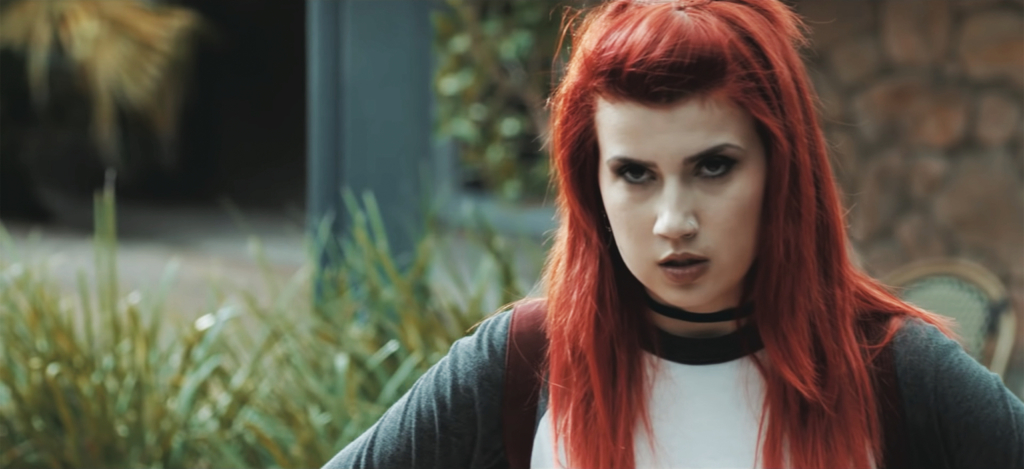
An eye-opening moment was to see the YouTube Space in [Los Angeles] pushing towards a traditional old school: a huge studio set, pre-built sets, great camera gear. YouTube is trying to disrupt the mainstream market and help their content creators produce more professional-quality content. YouTube are pushing to be the future of content.[39]Bryan Moses, Skype interview with author, 19 January 2018.
Alongside Jessica Holsman of Study with Jess, Clelland spent time attempting to solve the biggest dilemma confronting web-series creators: how and when to upload videos on a platform structured by the wildcard that is algorithms: the codes that determine who sees what personalised content on YouTube.
We went for the 8.30pm timeslot. Jess does a back-to-school series [and] it’s a very popular time on her channel. It was important to release Life of Jess directly after that so it had a good lead-in when there was a lot of traffic to her channel.[40]Laura Clelland, Skype interview with author, 25 September 2018.
But, for Superwog, an important hurdle was finding a way to transition to longer-form storytelling without compromising their content or betraying their audience. Walton recalls that he and the Saiddens engaged in workshops and writing sessions to delve into the motivations and journeys of their on-screen personas:
There’s something subversive and renegade about their channel that we wanted to maintain; we didn’t want to water it down in any way. It was really important to get to the core of who they were and, at same time, for these guys to get an understanding of my world, so we could mould these two worlds together.[41]Paul Walton, face-to-face interview with author, 1 September 2018.
According to Jones, YouTubers ‘often need a lot of traditional screenwriting and story-development support from established industry professionals to successfully transition to longer-form narrative projects’.[42]Mike Jones, personal communication with author, April 2018. However, the importance of established producers becoming exposed to more efficient forms of filmmaking was reinforced by Byrne, who described RackaRacka as ‘extremely fast and furious filmmakers of their own material in their own methodology’.[43]Julie Byrne, Skype interview with author, 14 December 2017. Indeed, RackaRacka’s content-production approach has been recognised by industry leaders: Screen Australia chief executive Graeme Mason, for instance, has described the YouTubers as ‘[t]he most successful content creators in the country’.[44]Graeme Mason, ‘The Good, the Bad and the Possible’, Screen Forever conference, Melbourne, 16 November 2016, available at <https://www.screenaustralia.gov.au/getmedia/aa9d4041-f0fd-45d2-8764-633d44d930d4/SPA-2016-speech.pdf>, accessed 17 August 2019. And Cowap has added that supporting RackaRacka ‘inspire[s] others to follow in their footsteps and in doing so, bring the mainstream along with them. And it enables Australia to stay ahead of the curve.’[45]Mike Cowap, quoted in Caris Bizzaca, ‘Australia: Multiplatform Storytelling Pioneer’, Screen News, Screen Australia website, 13 December 2016, <https://www.screenaustralia.gov.au/sa/screen-news/2016/12-13-australia-multiplatform-storytelling-pioneer>, accessed 17 August 2019.
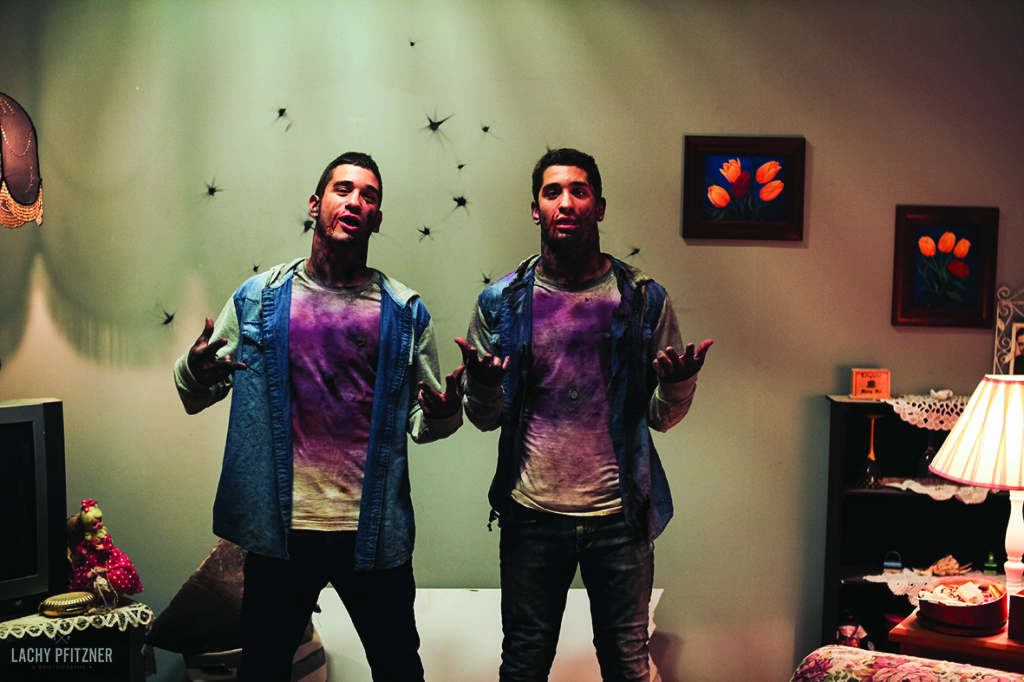
Artistic progression
The established producers learned firsthand from their Skip Ahead collaborators how storytelling is being adapted to what Burgess and Green have called ‘platform-centred vernacular codes’[46]Burgess & Green, op. cit., p. 42. – for example, the playful and ironic treatments of authenticity seen in lonelygirl15 that subverted audience expectations.Byrne reflects that getting the ‘right idea’ for a longform narrative that could work in a shortform-based platform such as YouTube was difficult; reflecting on RackaRacka’s genre-bending Skip Ahead project Stunt Gone Wrong (Live), she says, ‘For some of their fans, it was probably too long.’ To help address this, she brought in multi-Emmy-winning Ludo Studio principals Daley Pearson and Charlie Aspinwall as well as Red Dwarf script editor Andrew Ellard as story developers:
It was a fake live stream and worked well. It went for forty minutes [and] we edited it to look like one long live stream. Going from behind the scenes, to Ronald McDonald [Michael Philippou] doing the stunt that goes wrong. We end up with them trying to go to hospital. They end up in a road-rage situation. Then in a horror film at the end.[47]Byrne, op. cit.
Some creators already possess longform narrative skills, but still face the challenge of adapting their storytelling to the chaotic and saturated nature of the online platforms. This was arguably the case for AFTRS graduates Kalceff, Litton-Strain and Good as well as for the ABC-trained Batty. Litton-Strain recounts that finding an under-served audience in a fragmented marketplace via market research was essential to getting the second season of Jade of Death into development with the ABC and Screen Australia:
Our series is a television idea that Erin [Good] created and adapted into a shortform series to meet what we saw as a gap in the marketplace: high-end, short genre content for online. It was also the type of show we wanted to see [but] couldn’t find – which is in itself a reflection of [the] marketplace.[48]Taylor Litton-Strain, Skype interview with author, 30 January 2018.
Initiatives such as Skip Ahead, and their participants, are helping to solve the screen industries’ most pressing problem: how to monetise digital content and, in the process, establish a workable path towards producer sustainability.
Another vernacular that is popular on the web is parody, a form that encourages audiences to actively share their favourite creator’s videos.[49]Henry Jenkins, Sam Ford & Joshua Green, Spreadable Media: Creating Value and Meaning in a Networked Culture, New York University Press, New York, 2013, p. 202. For Batty, releasing Black As on YouTube meant capitalising on the especially shareable quality of self-parody:
We put up a little excerpt that went to 350,000 views in two days. It was really funny: the one where poo explodes [… and] where they take the car to burn. There was a driving sequence; it was raw. They had just pulled the Suzuki out of the mud, and there was a live croc in the back […] It was shared like crazy.[50]David Batty, phone interview with author, 30 October 2017.
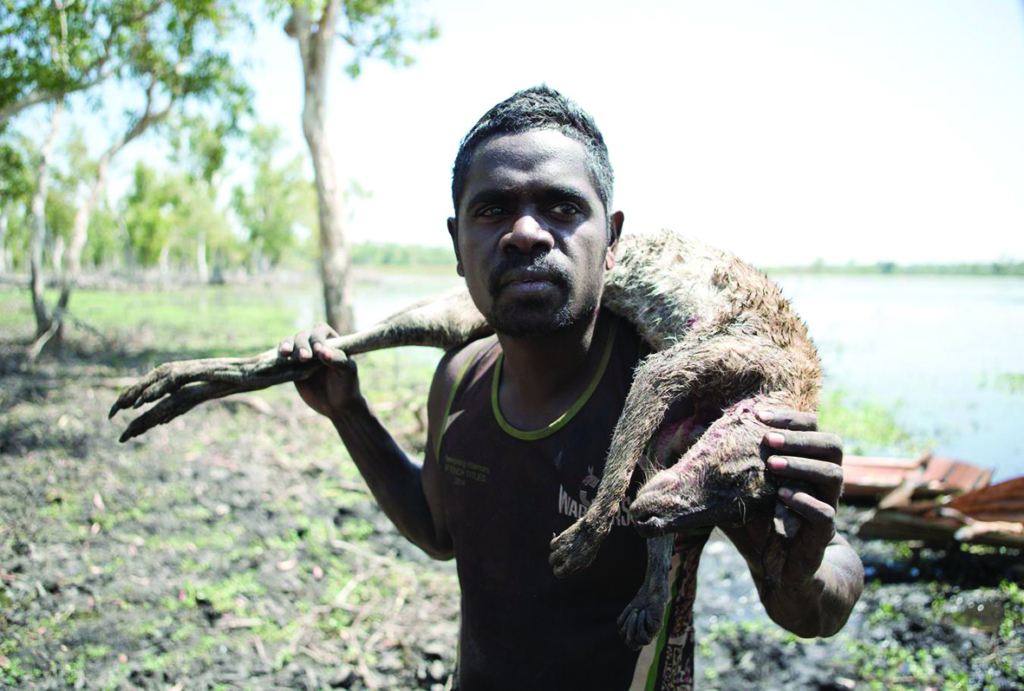
And Kalceff attributes the success of Starting from … Now! – which has amassed over 125 million views – to two key factors: the quality of the acting and the richness of the feedback from her online audience. By intensively heeding viewer comments for her episodes, Kalceff arguably tapped into the socially driven ‘gift economy’ that permeates the commodity-based landscape of the internet.[51]Jenkins, Ford & Green, op. cit., p. 61. Kalceff was then able to reshape her narrative to attract a niche, but mass, global audience:
I didn’t, for one minute, think at the start that the audience would be as invested, or that I would change my narrative based on what the audience was saying. But I came to see that as a really important part of it. It was actually a gift that the audience was giving.[52]Julie Kalceff, Skype interview with author, 30 November 2017.
Initiatives such as Skip Ahead, and their participants, have helped solve the screen industries’ most pressing problem: how to monetise digital content and, in the process, establish a workable path towards producer sustainability. Amid the disruption, digital storytellers are continuing to adapt their serial narratives to where audiences can be found in the new mainstream. But the prospect of discovering fresh material in a larger ocean of content remains as challenging as ever for veteran producers. A review of YouTube’s socio-technological architecture is needed to better accommodate the strategic format of the times: the web series.
This article has been refereed.
Endnotes
| 1 | Allan Cameron, Deb Verhoeven & David Court, ‘Above the Bottom Line: Understanding Australian Screen Content Producers’, Media International Australia, vol. 136, no. 1, 2010, p. 90. |
|---|---|
| 2 | Michael Curtin & Kevin Sanson, ‘Precarious Creativity: Global Media, Local Labor’, in Curtin & Sanson (eds), Precarious Creativity: Global Media, Local Labor, University of California Press, Oakland, 2016, p. 6. |
| 3 | Screen Australia, Online & On Demand 2017: Trends in Australian Online Viewing Habits, 2017, p. 13, available at <https://www.screenaustralia.gov.au/getmedia/f06697b8-07be-4a27-aa8b-bc3ad365238c/online-on-demand-2017>, accessed 18 August 2019. |
| 4 | Xu Cheng, Jiangchuan Liu & Cameron Dale, ‘Understanding the Characteristics of Internet Short Video Sharing: A YouTube-based Measurement Study’, IEEE Transactions on Multimedia, vol. 15, no. 5, 2013, p. 1188. |
| 5 | Stuart Cunningham & Adam Swift, ‘Over the Horizon: YouTube Culture Meets Australian Screen Culture’, in Felicity Collins, Jane Landman & Susan Bye (eds), A Companion to Australian Cinema, John Wiley & Sons, Hoboken, NJ, 2019, p. 475. |
| 6 | Jason Potts et al., ‘Social Network Markets: A New Definition of the Creative Industries’, Journal of Cultural Economics, vol. 32, no. 3, 2008, pp. 167–85. |
| 7 | Cristos Goodrow, ‘You Know What’s Cool? A Billion Hours’, YouTube blog, 27 February 2017, <https://youtube.googleblog.com/2017/02/you-know-whats-cool-billion-hours.html>, accessed 17 August 2019. |
| 8 | See John Herrman, ‘Media Websites Battle Faltering Ad Revenue and Traffic’, The New York Times, 17 April 2016, <https://www.nytimes.com/2016/04/18/business/media-websites-battle-falteringad-revenue-and-traffic.html>, accessed 19 August 2019. |
| 9 | Australian Communications and Media Authority, Australian Content Conversation Conference Overview, 16–17 May 2017, 2017, p. 10. |
| 10 | See ‘How Content ID Works’, YouTube Help, <https://support.google.com/youtube/answer/2797370?hl=en&ref_topic=9282364>, accessed 17 August 2019. |
| 11 | Richard Lanham, ‘The Two Markets: Libraries in an Attention Economy’, Library Resources and Technical Services, vol. 52, no. 2, April 2008, p. 9. |
| 12 | Commonwealth of Australia, Report on the Inquiry into the Australian Film and Television Industry, 7 December 2017, p. 80, available at <https://www.aph.gov.au/Parliamentary_Business/Committees/House/Communications/AustralianfilmandTV/Report>, accessed 17 August 2019. |
| 13 | Cameron, Verhoeven & Court, op. cit., p. 98. |
| 14 | Don Groves, ‘Sue Maslin and SPA Call for Better Development Deals for Producers’, IF.com.au, 28 November 2017, <https://www.if.com.au/sue-maslin-spa-call-better-development-deals-producers>, accessed 17 August 2019. |
| 15 | Mark David Ryan, Stuart Cunningham & Deb Verhoeven, 2nd Australian Producer Survey 2012: Understanding Australian Screen Content Producers: Wave 2, ARC Centre of Excellence for Creative Industries and Innovation, Brisbane, November 2012. |
| 16 | Tom O’Regan & Anna Potter, ‘Globalisation from Within? The De-nationalising of Australian Film and Television Production’, Media International Australia, vol. 149, no. 1, 2013, p. 8. |
| 17 | For information on the Skip Ahead cohort for 2019, who are in the midst of producing their web series, see ‘Screen Australia and Google Australia Announce Recipients of Skip Ahead 5’, media release, Screen Australia, 25 February 2019, <https://www.screenaustralia.gov.au/sa/media-centre/news/2019/02-25-skip-ahead-5-recipients-announced>, accessed 16 August 2019. |
| 18 | ‘Screen Australia and Google Australia Announce Skip Ahead Five’, media release, Screen Australia, 8 October 2018, <https://www.screenaustralia.gov.au/sa/media-centre/news/2018/10-08-screen-australia-google-announce-skip-ahead>, accessed 17 August 2019. |
| 19 | ‘Skip Ahead’, Screen Australia website, <https://www.screenaustralia.gov.au/funding-and-support/television-and-online/production/special-initiatives/skip-ahead>, accessed 17 August 2019. |
| 20 | For more on these evolutions in storytelling in response to new media, see Anthony N Smith, Storytelling Industries: Narrative Production in the 21st Century, Palgrave Macmillan, New York, 2018. |
| 21 | See Aymar Jean Christian, Open TV: Innovation Beyond Hollywood and the Rise of Web Television, New York University Press, New York, 2018, p. 56. |
| 22 | John T Caldwell, cited in Curtin & Sanson, op. cit., p. 11. |
| 23 | James Loke Hale, ‘More than 500 Hours of Content Are Now Being Uploaded to YouTube Every Minute’, Tubefilter, 7 May 2019, <https://www.tubefilter.com/2019/05/07/number-hours-video-uploaded-to-youtube-per-minute>, accessed 16 August 2019. |
| 24 | Hank Green, quoted in Stuart Cunningham & David Craig, Social Media Entertainment: The New Intersection of Hollywood and Silicon Valley, New York University Press, New York, 2019, p. 148. |
| 25 | See Tara Judah, ‘Place Your Bets: Unknown Odds at the 2014 Screen Forever Conference’, Metro, no. 184, Autumn 2015, p. 123. |
| 26 | Screen Producers Australia, ‘Screen Producers Australia’s Submission to the Australian and Children’s Screen Content Review’, 27 September 2017, available at <https://assets-us-01.kc-usercontent.com/89c218af-4a5a-00a2-9d83-3913048b3bc7/dcb8d75f-f9e1-4828-b966-1e323f037f5e/submission-SPA-Content-Review-Submission-FINAL.pdf>, accessed 16 August 2019. |
| 27 | Cameron, Verhoeven & Court, op. cit., p. 93. |
| 28 | Screen Australia, media statement to author, 19 July 2019. |
| 29 | See Liz Giuffre, ‘Comedy in the New World Order’, Metro, no. 191, Summer 2017, p. 126. |
| 30 | Tina Cesa Ward, Skype interview with author, 1 March, 2019. |
| 31 | Connor Van Vuuren, personal communication with author, 15 July 2019. |
| 32 | ‘Superwog to Forge New Ground with a Series for ABC Comedy and YouTube’, media release, Screen Australia, 22 June 2018, <https://www.screenaustralia.gov.au/sa/media-centre/news/2018/06-20-superwog-new-series-abc-comedy-youtube>, accessed 16 August 2019. |
| 33 | Rick Kalowski, Skype interview with author, 14 August 2018. |
| 34 | Guy Healy, ‘From “Social Media Entertainment” to “Open TV” in Australia: Emerging Hybrid Online TV Production Practices’, PhD thesis, Queensland University of Technology, Brisbane, forthcoming. |
| 35 | Ric Forster, Skype interview with author, 28 November 2017. |
| 36 | Beate Littig, ‘Interviews with the Elite and with Experts. Are There Any Differences?’, Forum: Qualitative Social Research, vol. 9, no. 3, 2008, p. 1. |
| 37 | Jean Burgess & Joshua Green, YouTube: Online Video and Participatory Culture, Polity Press, Cambridge, 2009, p. 100. |
| 38 | Cunningham & Craig, op. cit., p. 148. |
| 39 | Bryan Moses, Skype interview with author, 19 January 2018. |
| 40 | Laura Clelland, Skype interview with author, 25 September 2018. |
| 41 | Paul Walton, face-to-face interview with author, 1 September 2018. |
| 42 | Mike Jones, personal communication with author, April 2018. |
| 43 | Julie Byrne, Skype interview with author, 14 December 2017. |
| 44 | Graeme Mason, ‘The Good, the Bad and the Possible’, Screen Forever conference, Melbourne, 16 November 2016, available at <https://www.screenaustralia.gov.au/getmedia/aa9d4041-f0fd-45d2-8764-633d44d930d4/SPA-2016-speech.pdf>, accessed 17 August 2019. |
| 45 | Mike Cowap, quoted in Caris Bizzaca, ‘Australia: Multiplatform Storytelling Pioneer’, Screen News, Screen Australia website, 13 December 2016, <https://www.screenaustralia.gov.au/sa/screen-news/2016/12-13-australia-multiplatform-storytelling-pioneer>, accessed 17 August 2019. |
| 46 | Burgess & Green, op. cit., p. 42. |
| 47 | Byrne, op. cit. |
| 48 | Taylor Litton-Strain, Skype interview with author, 30 January 2018. |
| 49 | Henry Jenkins, Sam Ford & Joshua Green, Spreadable Media: Creating Value and Meaning in a Networked Culture, New York University Press, New York, 2013, p. 202. |
| 50 | David Batty, phone interview with author, 30 October 2017. |
| 51 | Jenkins, Ford & Green, op. cit., p. 61. |
| 52 | Julie Kalceff, Skype interview with author, 30 November 2017. |
